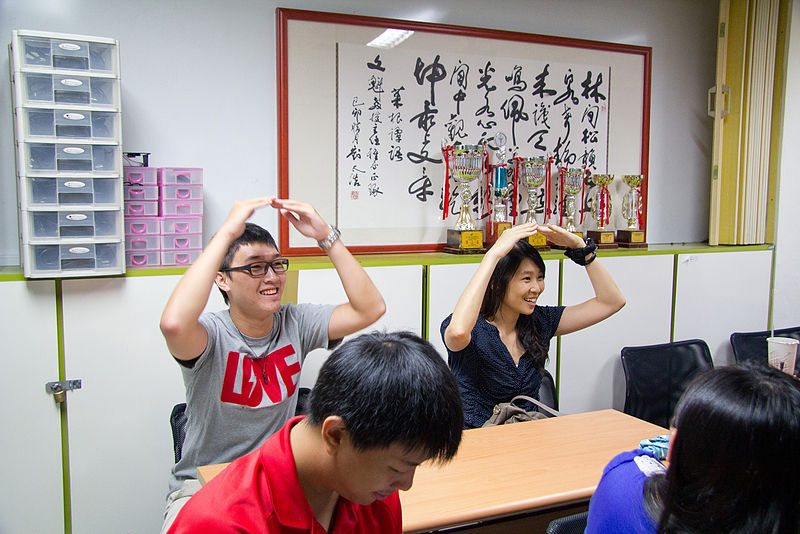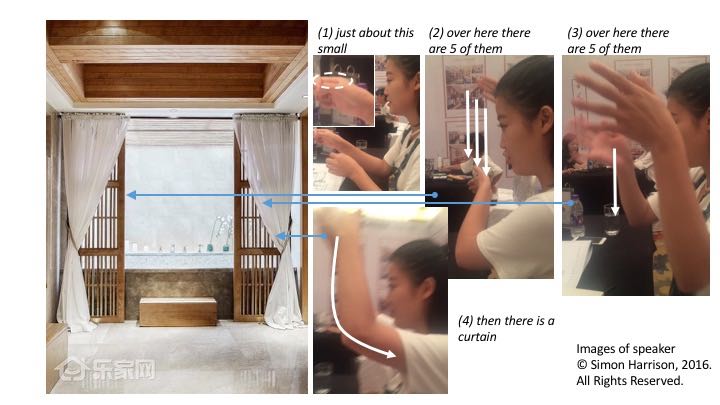
December 9, 2016, by Tony Hong
Are the Chinese ‘losing their gestures’?
A conversation between David H. Fleming (International Communications) & Simon Harrison (School of English).
The University of Nottingham Ningbo China.
A common interest among researchers in the Faculty of Humanities and Social Sciences is discourse and communication. Because definitions of discourse and communication are domain-specific, interesting debates arise about the nature of the terms that define distinct fields. This blog illustrates such discussion by picking up a conversation between David Fleming from International Communication and Simon Harrison from School of English on the topic of ‘gestures’, and specifically, concerning whether or not the Chinese may be ‘losing their gestures’.
Fleming says that the Italian philosopher Giorgio Agamben wrote that ‘by the end of the nineteenth century, the Western bourgeoisie had definitely lost their gestures.’ Why? It was something to do with the arrival of new technologies, specifically new imaging machines such as cinema, which radically reconfigured social optics and embodied actions. One recalls here Marcel Mauss’s hospital bed observations that his French nurses had begun moving to and fro like Americans, because they had been watching so many Hollywood movies. The Western bourgeoisie also lost their gestures because they had allowed the merchant class to marry into their ranks. With this resulting in a seismic shift in their habitus, manners, and embodied movements. Or at least, the ones that were transmitted to their descendants. Could we not say, then, that equally at the beginning of the twenty-first century, the Chinese too are definitely losing their gestures? New technologies again play their role. And not just because the youth are so often fastened to their smartphones at every opportunity, although that surely is a part of it (as is what they see on their screens a la Mauss, no doubt). Malls too are technologies, Fleming argues. They demand a certain postural and gestural respect, a way of seeing, listening, and desiring. Anecdotally speaking, while walking his dogs he says he also mainly observes the young Chinese jogging, or doing LA style yoga poses in their Decathlon lycra. Not Piada, group dancing, or leisurely Tai Chi.
At this point in the conversation, Harrison points out how Fleming’s statements on ‘gestures’ refer to whole classes of differentiated bodily actions ranging from full body interactive routines to postures to interactions with objects and nonverbal tics. What about the spontaneous hand movements that accompany and are fully integrated to Chinese speech, could they also evidence a shift in habitus, manners, and embodied movements? Despite a stereotype that “Chinese people don’t gesture” (or at least they gesture less), such gestures seem integral to speaking in an array of interactive contexts. The following example may help to illustrate. Sat in the lobby of a 4-star hotel hired out to a decoration company, a young Chinese professional explains to her assigned architect the ‘style’ of the doorway she envisages for her apartment (“东南亚的那种感觉” Southeast Asia kind of feeling). The figure below shows how her gestures illustrate each proposition concerning the size and shape, positioning, and decoration. Her gesturing hands are continuously in motion as she (1) describes the dimensions of the material, (2 & 3) the layout of the beams, and (4) the draping decorative curtain.
叫什么就木头,中式的那种木头,就是这么小的那种 小方型的,就2个,这边用五根,这边用五根,然后又有帘子,然后就是度假风的那种,东南亚的那种感觉。
What’s it called, just wood, Chinese style sort of wood, (1) just about this small straight edge (cylindrical-like), only two of them, (2) over here there are 5 of them, (3) over here there are 5 of them, (4) then there is a curtain. So it’s a just a travel kind of style, Southeast Asia kind of feeling.
Through conventional modes of gestural representation identified by Mueller, the speaker’s hands embed forms in movement trajectories to communicate the dimensions, materials and textures of the door she desires, thereby combining with speech to convey her exotic imagery to the architect. Harrison argues there seems to be no ‘loss’ evident in this kind of spontaneous gesturing.
Perhaps ‘loss’ brings too much baggage with it that must be felt nostalgically nowadays, Fleming concedes. After all, new power relations and technics are productive as well as eliminative. There is nothing to mourn nor celebrate. In the cultural shift from horses to horsepower engines, for example, we definitely lose (in terms of quantity and familiarity) blacksmiths, riders and breeders, but we also gain mechanics, drivers and designers (and all the other necessary manifold professions and peoples). Things are always changing, and always have been, in the gnomic sense that change is the universal constant. Loss is always something that change engenders, and is just the flip side of gain. While the Chinese specific gestures of yester-millennia, or even yesteryear (as in Antonioni’s Chinese documentary[1]) have undoubtedly been lost, new ideas and movements (such as that of a “Balinese style” with which one could decorate a Chinese home) have also arrived. The Chinese have always been losing their gestures, and for as long as we still call them “Chinese,” on account of the fact that they always will gesture, they always will be.
Find out more about the researchers:
David H. Fleming is Assistant Professor in Film and Media at UNNC (http://www.nottingham.edu.cn/en/internationalcommunications/staffprofile/davidfleming.aspx)
Simon Harrison is Assistant Professor in Applied Linguistics at UNNC (http://www.nottingham.edu.cn/en/english/staff/simon-harrison.aspx)
Acknowledgements: 陈星超 (transcription)
Images of speaker © Simon Harrison, 2016. All Rights Reserved.
[1]Chung Kuo, Cina – A 1972 Italian documentary by the director Michelangelo Antonioni. Shot during China’s Cultural Revolution, the documentary focuses on the ordinary lives of Chinese people.
No comments yet, fill out a comment to be the first


Leave a Reply